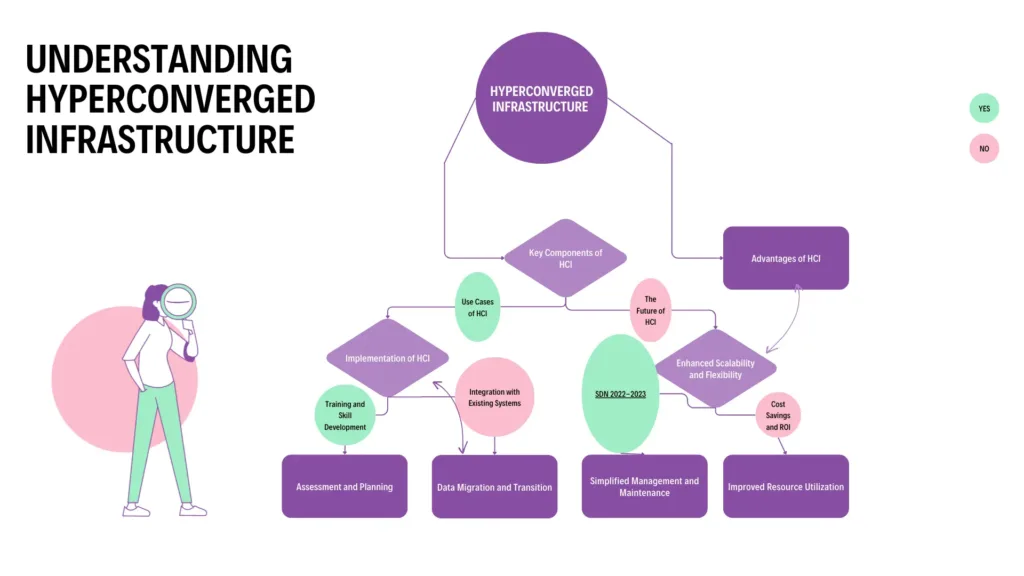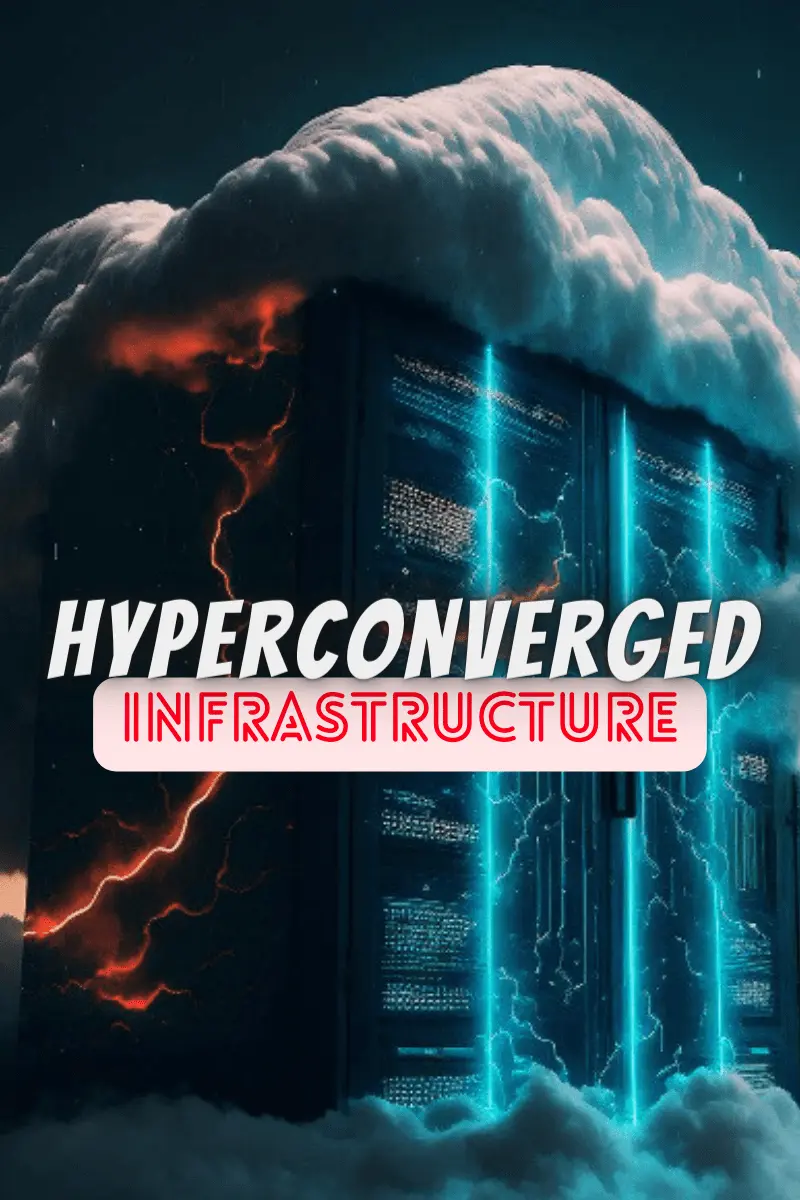In today’s time 2023-24, businesses are non-stop looking for the new type of or latest IT technology to enhance their offices’ efficiency, scalability, and manageability. Hyperconverged Infrastructure (HCI) has a game-changing technology at that time that addresses these needs, transforming traditional data centers into faster and streamlined powerhouses of performance. In this article, we will discuss this deeply so let’s go and let’s talk about Hyperconverged Infrastructure, exploring its components, benefits, implementation, and its role in developing our new future of IT.
Contents
Introduction
In this new world where It word is not only used but is very important for us, So we have to develop IT Infrastructures Technology that need to evolve with technological advancements. Hyperconverged Infrastructure (HCI) stands as a big example of this new evolution and It developing is a way where organizations manage and utilize their resources.
Understanding Hyperconverged Infrastructure
What is HCI?
Hyperconverged Infrastructure (HCI) is a very difficult IT framework that uses computing, storage, and networking components into a single, software-driven platform. This type of framework we need for separate silos of hardware, streamlining operations, and optimizing resource utilization.
Key Components of HCI
HCI comprises three core components:
- Compute: This includes the processing power and memory required to run applications and virtual machines.
- Storage: HCI utilizes a distributed storage architecture that pools storage resources across all nodes, enhancing scalability and redundancy.
- Networking: Network components enable communication between different nodes within the HCI cluster and with external networks.
How HCI Differs from Traditional Infrastructure
Unlike traditional setups where computing, storage, and networking are disparate entities, HCI unifies these components through virtualization and software-defined technologies. This type of integration can be simple for all kinds of management, enhances agility, and reduces the hardness associated with traditional data centers.
Advantages of HCI

Enhanced Scalability and Flexibility
HCI allows businesses to scale resources seamlessly by adding nodes to the existing cluster. This elasticity ensures that organizations can meet growing demands without major disruptions.
Simplified Management and Maintenance
With a centralized management interface, IT teams can monitor and control the entire infrastructure from a single dashboard. This streamlined approach minimizes administrative overheads and accelerates troubleshooting.
Improved Resource Utilization
HCI’s dynamic resource allocation ensures that computing and storage resources are distributed efficiently. This optimization prevents resource wastage and enhances overall system performance.
Cost Savings and ROI
The integrated nature of HCI leads to reduced hardware and maintenance costs. So we can say that it will provide us great scalability and efficient resource utilization contributing to a faster and amazing return on investment (ROI).
Implementation of HCI
Assessment and Planning
Before we can discuss adopting HCI we can try to understand the businesses that how they assess their existing infrastructure and determine the suitability of HCI for their needs. A well-defined plan should address migration strategies, integration procedures, and potential challenges for the implementation.
Integration with Existing Systems
Integrating HCI with legacy systems requires a meticulous approach to ensure compatibility and data integrity. Proper integration paves the way for a smooth transition and prevents disruptions.
Data Migration and Transition
Migrating data to the new HCI environment demands careful data migration strategies. This involves selecting the right tools, scheduling migrations, and verifying data integrity post-migration.
Training and Skill Development
IT teams need proper training to manage and operate the new HCI environment effectively. Upskilling employees ensures they can leverage HCI’s capabilities to the fullest extent.
Use Cases of HCI
Virtual Desktop Infrastructure (VDI)
HCI’s ability to efficiently and effectively allocate resources. This resource is used for making it an ideal choice for VDI deployments. It ensures consistent performance for virtual desktops, enhancing user experience.
Private and Hybrid Cloud Deployments
Organizations leverage HCI to build private and hybrid clouds, offering agility and scalability for their cloud-based applications and services.
High-Performance Computing (HPC)
HCI’s equal processing capabilities make it reliable and suitable for high-performance computing tasks which are created on a daily basis in the meantime, such as simulations, data analysis, and many types of scientific research.
Remote and Branch Office Setup
For remote locations, HCI provides a centralized management system and data storage, ensuring high performance and creating a low risk of data loss.
Challenges and Considerations
Data Security and Compliance
Centralized data storage in HCI requires robust security measures to protect sensitive information. Compliance with industry regulations is also a critical consideration.
Vendor Lock-In
Adopting HCI from a specific vendor could lead to vendor lock-in, limiting future flexibility. Careful vendor selection and consideration of exit strategies are essential.
Network and Storage Complexity
HCI’s integration of storage and networking components can introduce complexities that require careful management and optimization.
The Future of HCI
Integration with Emerging Technologies
HCI is expected to collaborate with our new technologies like AI and machine learning and also it will be enhancing automation and predictive analytics capabilities for our future.
Role in Edge Computing
As edge computing gains prominence, HCI’s compact form factor and efficient resource utilization make it a valuable component for edge deployments.
Anticipated Trends and Developments
Future HCI developments may include more advanced networking features, increased security measures, and improved interoperability with other IT frameworks.
Conclusion
Hyperconverged Infrastructure (HCI) is redesigning the IT landscape by providing us with a unique unified, highly scalable, powerful manageable platform for different types of businesses to work in the digital age. Its different type of work mechanism or unique way of computing, storage, and networking functions will be designed for the way for efficiency, cost savings, and future-ready infrastructure.
Frequently Asked Question’s
Is HCI suitable for small businesses?
Yes, HCI’s scalability and simplified management make it a viable option for businesses of all sizes.
Can HCI work with legacy applications?
HCI can integrate with legacy applications, but compatibility assessments are crucial.
How does HCI ensure data redundancy?
HCI achieves data redundancy by distributing data across multiple nodes within the cluster.
What is the typical ROI period for HCI implementation?
Depending on the organization’s needs and scale, the ROI period for HCI can vary, but it’s generally shorter compared to traditional setups.
Is data migration complex during HCI adoption?
Data migration can be complex, but with proper planning and tools, it can be executed smoothly.

